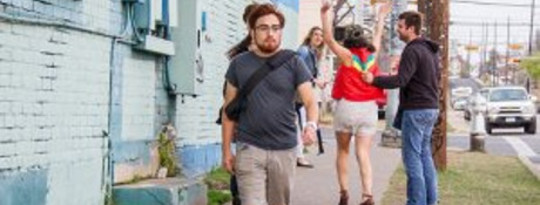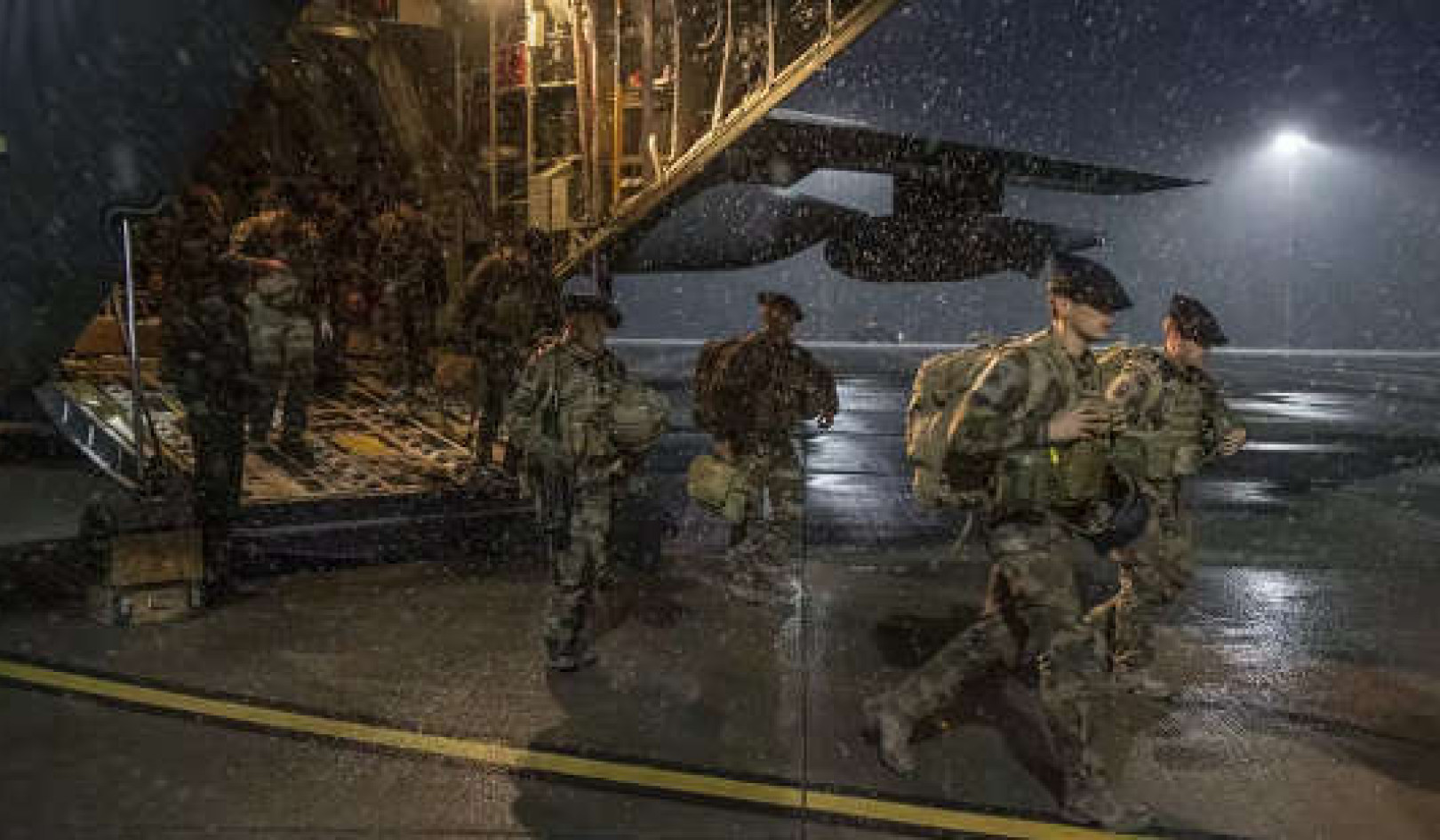 This Austin neighborhood is safer because people are out on the streets.
This Austin neighborhood is safer because people are out on the streets.
(Photo by Lotus Carroll under a CC license)
While crime rates have dropped dramatically in most US cities over the past two decades, there has been a recent uptick in robberies of cell phones and laptops, which can be easily sold over the Internet. What we can to do to deter criminals, who rob of us of our peace of mind as well as possessions? Get people out on the streets, which was what helped turn the tide on crime rate beginning in the 1990s. The old wisdom that lively neighborhoods are safe neighborhoods is still true.
You don’t have to be an ex-linebacker or hold black belt in karate to help keep the peace in your neighborhood. Anyone out on the sidewalks deters crime and brings a measure of harmony and energy to the streets. Make a special effort to greet everyone you meet with a smile and keep watch out for any signs of problems — a fresh scrawl of graffiti or unusual comings-and-goings at a residence.
Grandmothers in the Yesler Terrace public housing community in Seattle helped rid their streets of crack dealers by setting up lawn chairs every evenings at corners frequented by dealers. All they would do is knit and chat, but it was enough to move the troublemakers away. Soon, the nearby Garfield neighborhood community council declared the area a drug-free zone and led marches through the community on Friday nights to show they were serious.
An effective anti-crime initiative underway in many parts of the country is organizing neighbors to walk the beat — just like the police used to do in the days before squad cars. Indeed, some cities are putting cops back on the beat, on foot or bicycles, to prevent crime by patrolling the streets rather than just answering calls once crimes have been committed. But police can’t be everywhere you need them. So citizens are coming forward to help keep the streets safe by patrolling their neighborhoods in the evenings.
A few years back, neighbors got together to walk the streets in Minneapolis’s Lyndale neighborhood, which helped bring crime down 40 percent in four years. Calling themselves the Lyndale Walkers, they worked in pairs or larger groups strolling up and down the sidewalks of this diverse community that includes elegant turn-of-the-19th century homes and a high-rise public housing project.
They rarely stopped a crime in action, and never pursued confrontations with young gang members or criminals, but did notify the local police precinct by cell phone whenever they saw something suspicious underway. They also filed reports detailing what they found on their walks, which helped police get a better overall picture of problems in the neighborhood.
Just as importantly, their simple presence on the sidewalks dampened lawless behavior and raised hope in the neighborhood. Indeed, the Lyndale neighborhood transformed quickly from a place prospective home-buyers avoided to one with the fastest-rising property values in the entire state.
The success of the Lyndale Walkers soon inspired similar efforts in other communities across Minneapolis affected by crime. Reverend Carly Swirtz, leader of the 11th Avenue Block Club in the low-income Phillips neighborhood, describes her experience.
“We have lots of successes. One of the best advantages of a patrol is getting to know your neighbors. You can learn a lot on those strolls! We had two really big problem crack houses a couple of years ago. Many gun shots and police calls. It was due to our block club patrol and watch [group] that we finally got them out.”
Neighborhood safety is about more than crime. Luther Krueger, one of the leaders of the Lyndale Walkers, noted that even neighborhoods with quite low crime rates are forming what they call stroll patrols, “to take the edge off the usual impression of citizen patrols being people strictly looking for crooks or crimes.”
Nolan Venkatrathnam, a patrol leader in Minneapolis’ Stevens Square/Loring Heights neighborhood, which does contend with crime problems, noted that one of their notable successes came when, “a patrol team retrieved a woman from her apartment that was filling up with smoke from a frying pan left on the stove. The women had apparently taken medication and fallen asleep and left the pan on the stove. Well the patrol got the women out and [she] was treated by medical personnel.”
This story is adapted from the Great Neighborhood Book
written by Commons magazine editor Jay Walljasper
in collaboration with Project for Public Spaces.
Recommended Book:
The Great Neighborhood Book: A Do-it-Yourself Guide to Placemaking
by Jay Walljasper.
 The Great Neighborhood Book explains how most struggling communities can be revived, not by vast infusions of cash, not by government, but by the people who live there. The author addresses such challenges as traffic control, crime, comfort and safety, and developing economic vitality. Using a technique called “placemaking”—the process of transforming public space—this exciting guide offers inspiring real-life examples that show the magic that happens when individuals take small steps and motivate others to make change. This book will motivate not only neighborhood activists and concerned citizens but also urban planners, developers, and policymakers.
The Great Neighborhood Book explains how most struggling communities can be revived, not by vast infusions of cash, not by government, but by the people who live there. The author addresses such challenges as traffic control, crime, comfort and safety, and developing economic vitality. Using a technique called “placemaking”—the process of transforming public space—this exciting guide offers inspiring real-life examples that show the magic that happens when individuals take small steps and motivate others to make change. This book will motivate not only neighborhood activists and concerned citizens but also urban planners, developers, and policymakers.
Click here for more info or to order this book on Amazon.
About the Author
 Jay Walljasper, Senior Fellow at On the Commons and editor of OnTheCommons.org, created OTC’s book All That We Share: A Field Guide to the Commons. A speaker, communications strategist and writer and editor, he chronicles stories from around the world that point us toward a more equitable, sustainable and enjoyable future. He is author of The Great Neighborhood Book and a senior associate at the urban affairs consortium Citiscope. Walljasper also writes a column about city life for Shareable.net and is a Senior Fellow at Project for Public Spaces and Augsburg College’s Sabo Center for Citizenship and Learning. For more of his work, see JayWalljasper....
Jay Walljasper, Senior Fellow at On the Commons and editor of OnTheCommons.org, created OTC’s book All That We Share: A Field Guide to the Commons. A speaker, communications strategist and writer and editor, he chronicles stories from around the world that point us toward a more equitable, sustainable and enjoyable future. He is author of The Great Neighborhood Book and a senior associate at the urban affairs consortium Citiscope. Walljasper also writes a column about city life for Shareable.net and is a Senior Fellow at Project for Public Spaces and Augsburg College’s Sabo Center for Citizenship and Learning. For more of his work, see JayWalljasper....


























